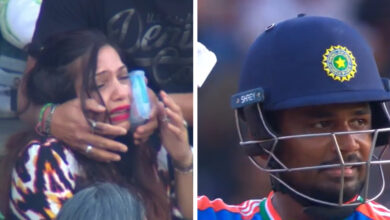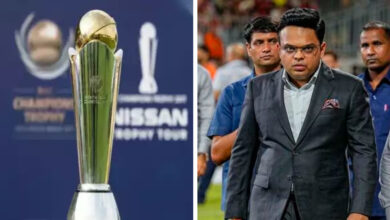Why Indian badminton needs to stay patient with Treesa Jolly-Gayatri Gopichand | Badminton News

Sensational, unending, long, 80-90 shot rallies is where women’s doubles pairings get famous in what is badminton’s toughest event to warm up to. The trouble is you realise you have watched a to-be Youtube highlight classic and a ruminating slow rumble of breathtaking defense, only after staring at hours of metronomic rallies, which go past one after another. The shot-making in women’s doubles is seldom power-packed and almost always settles into a rhythm of unblinking to-and-fros rather than snappy repartee of men’s or mixed doubles. It’s unrushed, strictly not for the restless and full of long passages of play when nothing much might happen. Some may even call it boring, though Indians who grow up on a staple of cricket, will merrily enjoy this category that hits the hour-mark, as long as Indians win here.
But watching it needs you to buy into the basic idea that the shuttle might not get killed quickly. Its practitioners are trained to resurrect rallies defending shuttles inches off the ground. It’s like clay-court baseline pendulums of tennis with punishing rallies for 365 days in badminton’s women’s doubles.
This category takes time to mould players into perfection. Jwala Gutta won the Commonwealth Games at 27 and World Championships bronze at 28. Treesa Jolly and Gayatri Gopichand are 21, and will take their time to hit the big headlines. It means those watching need to show patience, which starts not routinely hankering to split them up and pair them with other candidates, when results on the circuit go fallow. They are not a mix-and-match project at a kurta-dupatta ethnic store.
India’s Treesa Jolly, right, and Gayatri Gopichand Pullela in action against China’s Li Wen Mei and Liu Xuan Xuan during day four of the YONEX All England Open Badminton Championships at the Utilita Arena Birmingham, England. ( AP | PTI)
Twice now – at the Badminton Asia Team Championships in February when India won gold and this last week at the Super 750 Singapore Open – the young pairing has given proof of its ability to beat Top 10 pairings. The World Nos 2 and 6 from Korea were taken out over Thursday and Friday as they made their first semifinal of this high grade tournament. This is besides their All England semifinals in two seasons, which rather than garnering praise, is used as a taunt to make it sound like Birmingham is the only tournament they can score wins at.
Having beaten 5 of the current Top 10 pairings age 21, should ideally seal their partnership marking it for long term potential. But mutterings continue in badminton circles.
Gayatri cops most scrutiny for being Pullela Gopichand’s daughter and criticism for not winning every match, playing relentless attack which frankly, is not quite how women’s badminton proceeds. She has her net interceptions, plays a very cerebral game where she varies pace and placement to some lethal effect as was seen against Koreans.
She can do with far more power, but any regular watcher of WD will tell you power hits and smashes get retrieved watertight defenses all the time, and this category needs more varied skills than mad thrashing. Even Ashwini Ponnappa who once boasted of the hardest smash a woman, realised that on the Tour playing week in, week out, power-attacks can only be a fraction of the points womanly-possible. Jwala first chose her spotting her service variations, not the smash.
Shuttle maneuvering brings far more returns and Treesa Jolly is the best example of how soft drops are the norm, her smash the exception, if she has to preserve her shoulder. On days when she fails to nuance her big hit, she can run into a wall of frustration as everything comes back against the top pairings. So Tanisha Crasto-Treesa might not be as smart a mix-match as some think it to be.
The Chinese Chen-Jia and Liu-Tan are masterly in speedy aggressive attacks, and that’s where WD might well be headed. But even they set a lot of store on chess-play on the court to open up empty spaces, and both Gayatri and Treesa will have to get sturdier in defense, even as their power increases incrementally.
Treesa Jolly and Gayatri Gopichand in action. (BWF/Badminton Photo)
As was the case with Sindhu for most of her career, and Satwik-Chirag now, Treesa-Gayatri will have to prioritise certain tournaments to hit the high notes at, and year-long consency might take a while to achieve. Gayatri’s fitness certainly needs shoring up, but it will be unwise to treat Treesa like a hitting-machine too. It’s why pairing her with other inexperienced juniors just because they hit a few smashes hard, makes zilch sense. Smashes get neutralized in women’s doubles.
This pair will have their glaring downs for a stack of months, lose in single digit set scores to the Chinese and take time to truly get into the Top 8 bracket. But Indians will need to step back from sharpening knives at every turn. Also, Ashwini-Tanisha have earned their Olympic spot, and calls to replace them just because Treesa-Gayatri chomped into couple of big scalps, are equally reeking of recency prejudice, besides the rules not even having a provision for such a swap.
Gayatri has grown up lening to taunts that come her way, sheathed as they are in criticism of her non-smacking game that lacks power. She bears them stoically and knows both have plenty of work to do, and rough phases to negotiate. But if you watched women’s doubles closely, you’d know they are shaping up nicely to become a formidable, title contending pair. Those watching can, for once, sit back and eat a 5-Star, and follow its tag line of ‘Do nothing.’ Women’s doubles is a little like that chocolate bar: it takes its nougaty, caramely time to get going. Treesa-Gayatri deserve to be persed with, without constant hackings at that hyphen.







